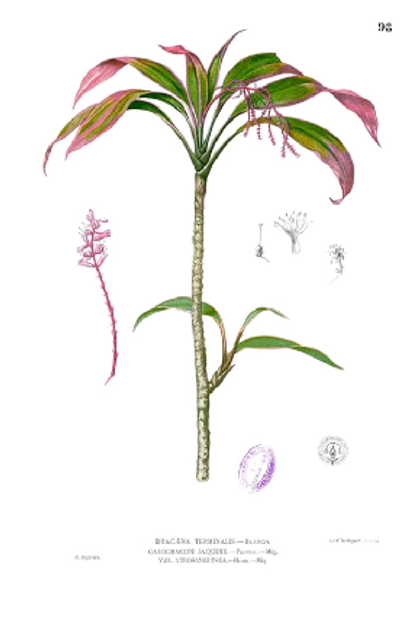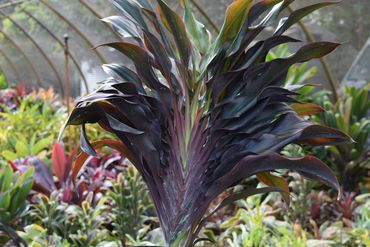Introduction to Cordylines (Ti Plants)

Ti (pronounced tea) plants: botanically namedCordyline terminalis, did not take the traditional route to our gardens, i.e., like crotons (codiaeum)discovered in the Far East and brought West to Europe and America by European trading companies, botanists and settlers. Rather, Cordylines or ti plants were brought evermore East from Polynesia, and Melanesia and by the original settlers to Hawaii via dugout canoes. Eventually in more recent times, these colorful plants made their way into mainland America and across to Europe.
Cordyline foliage varies from spear, lance-like leaves to fat, sheath-like banana leaves to almost flat, indented spoon-like forms. Hardy to about 30 degrees, these low-maintenance ornamental, woody shrubs grow to anywhere from 3 to 10 feet depending upon the variety. If you’re originally from the Northeast then the statement, “They’re like the Hostas of Florida,” is true in the sense that they love the shade but unlike Hostas which are perennials and dieback yearly, Cordylines are evergreens.



